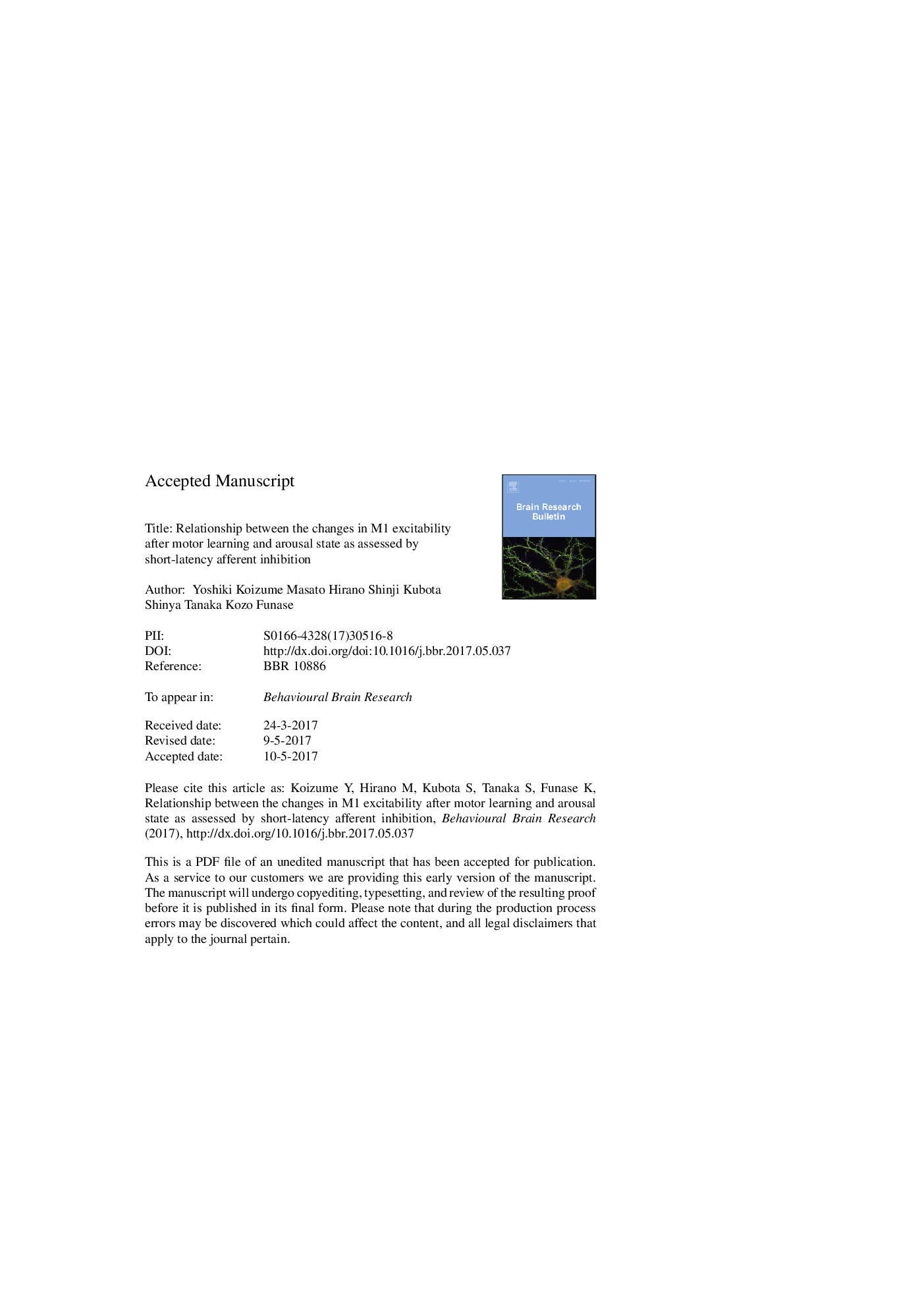| Article ID | Journal | Published Year | Pages | File Type |
|---|---|---|---|---|
| 5735057 | Behavioural Brain Research | 2017 | 36 Pages |
Abstract
To examine the factors that influence the inter-individual differences in the changes in primary motor cortex (M1) excitability seen after motor learning, we investigated the relationship between the amplitude of transcranial magnetic stimulation-induced motor evoked potentials (MEP) and short-latency afferent inhibition (SAI) after motor learning, based on the working hypothesis that SAI can be used to evaluate cortical acetylcholine (ACh) activity. To confirm this working hypothesis, we manipulated the arousal state of the subjects using a vigilance task, the outcomes of which might be correlated with cortical ACh activity, and investigated the effects of arousal state on SAI. As a result, we showed that SAI was significantly affected by arousal state. Consequently, we concluded that the subjects' arousal state during motor learning tasks is one of factors to influence on inter-individual differences in the changes in M1 excitability seen after motor learning tasks.
Related Topics
Life Sciences
Neuroscience
Behavioral Neuroscience
Authors
Yoshiki Koizume, Masato Hirano, Shinji Kubota, Shinya Tanaka, Kozo Funase,
